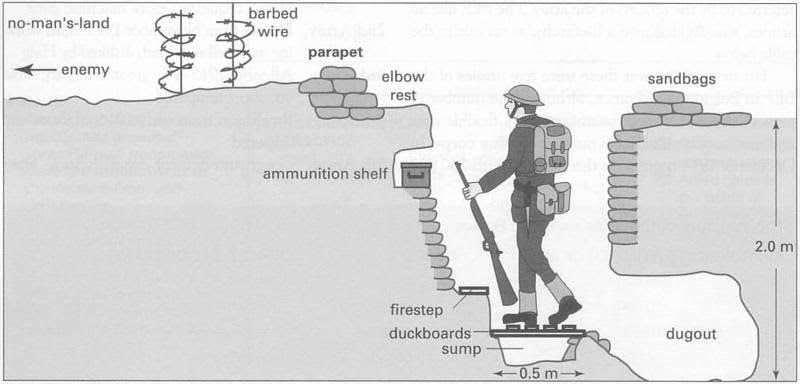The Trench Systems Became More Complex Through Decades
Early trenches were nothing more than ditches dug for the purpose of providing cover during brief wars. However, as the Western Front came to a halt near the end of 1914, the necessity for a more sophisticated system became obvious. The majority of the ditches were constructed according to a set of guidelines. A front wall, sometimes known as a parapet, was constructed facing the adversary and measured around 10 feet in height. Sandbags ran the length of the structure, extending 2 to 3 feet above ground level. The majority of the ditches were roughly 3 meters deep and 1 to 2 meters broad.
For support, they were reinforced with wooden beams. On the ditch, a ledge was constructed that allowed a soldier to walk up and see over the top, generally through a hole between the sandbags. Sandbags were also used to line the back wall, which helped to absorb blasts while also protecting the walls from rain and enemy shelling. Furthermore, machine guns were housed in concrete bunkers built at key locations.
As World War I continued, both sides, particularly the Germans, created trench systems of increasing depth and strength to ensure that the enemy could not break through at any point. The Germans devised a complex defense system based on pillboxes, which are concrete bunkers for machine guns. More barbed wire was installed behind the pillboxes, as well as concrete-reinforced trenches and dugouts to withstand artillery fire. There were other lines of trenches behind these positions that were effectively out of range of the enemy's artillery fire. By 1918, the Germans had built trenches that reached a depth of 14 kilometers.











